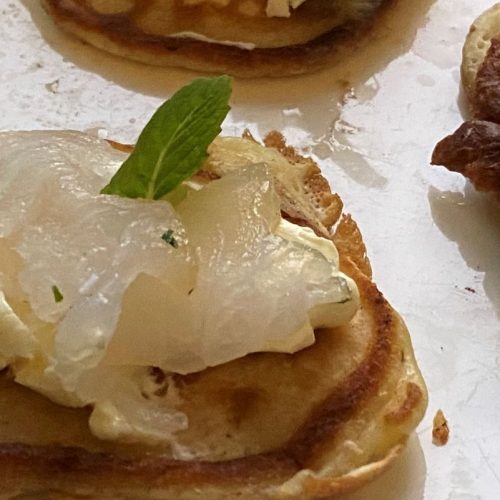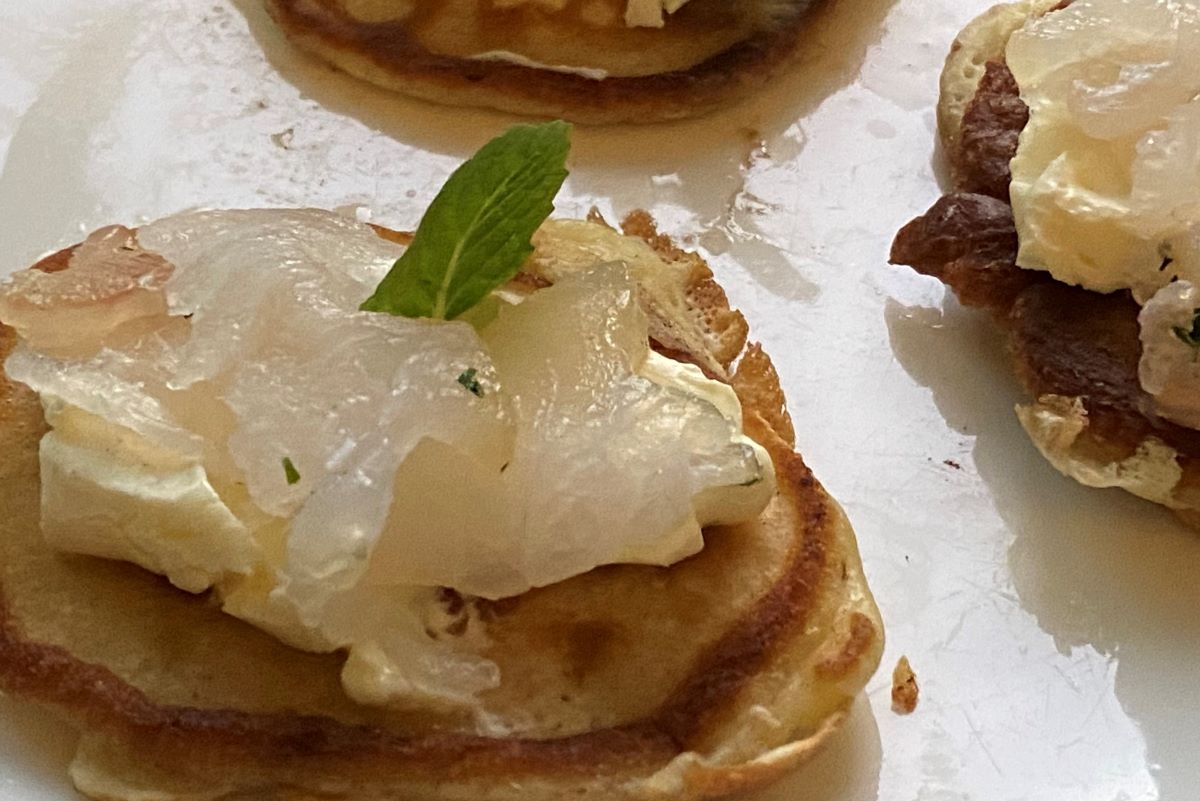Cured grouper is an example of a cured but very low fat fish. Garoupa, as the fish is called in South East Asia, comes in different sizes and forms. Its meat is prized in Hong Kong for its firm texture and flaking after cooking as well as for its taste. As the fat content is low, it pairs well with a fat containing sauce or vegetables prepared in oil. As the grouper is a predator and can become old, it is not recommended to eat the fish too often as it may contain some mercury. Here we describe the curing of this versatile fish.
The art of making cured grouper
Grouper comes in different sizes. The farmed version can be filleted by yourself and cured like a sea bass. Here we selected a fresh piece of fish meat of the giant grouper, with the skin on. You may need to de-bone partially at home, which will be easy for the large bones. To ensure that possible parasites will be killed, we freeze the fillets for a week at -20 C. For curing of low fat fish, we use more salt than sugar. Dill is still one of the nicest herbs to go along, which imparts flavor to the fish. The salt and sugar draw out moisture from the fish and reduce spoilage. At the same time the texture of the fish flesh becomes more firm.
Garoupa and other members of the sea bass families, sometimes can have some cartilage going through the meat. Try to cut that out.
Other than that serve it on toast or better even, blini, on a bed of creme fraiche or double cream.
Special equipment
a sharp cooks knife
some weight

Cured grouper
Ingredients
For the curing
- 2 lbs (900 g) grouper fillet
- 2.3 oz (65 g) kosher or sea salt
- 1.3 oz (35 g) sugar
- 1 bunch dill
- 1/2 tsp pepper
Instructions
How to cure
- Wash the fresh fillets and dry them on a kitchen towel
- wrap them in plastic wrap and then in a zip lock bag. Package tightly
- Freeze the fillets at -20 C for 7 days or one day at -31 C if you would have such a freezer
- After 7 days, take the fillets out.
- prepare the salt, sugar and ground pepper mixture
- on the bottom of an oblong shaped container, place a third of the mixture and some dill stalks
- Place halve of the fillets skin side down on this mixture. Then take another third of the sugar/pepper/salt mixture and sprinkle over the meat side. Add the washed and dried dill on this as well.
- Then place the other fillets with the meat side down on the bottom fillets. Cover with remaining mixture and with remaining dill. For thick fillets also rub the sides. Cover with plastic wrap.
- Place a heave weighted pan or the like on the fillets and turn once after a full day.
- Liquid is coming from the fish after a day and more so after 2 days. Discard this liquid
- Clean the fillets a little with a spoon or the back of a cooks knife
- Freeze them for 30 minutes to firm up the meat further
- Then with a sharp knife, cut thin slices of cured fish and collect on a plate
- You may also place these on plastic wrap, place the serving platter upside down on top and turn the whole thing having the plastic wrap keeping things in place
- You can decorate with some micro greens or serve the cured grouper with some creme fraiche or double cream on a blini, a savory pancake from Russia.
Notes
Remarks
1. A cure of 24 – 48 hr is sufficient, even for thicker pieces. Turn at the least once in between. Weighting helps to draw out moist and improve contact between the fillets.
2. Feel free to use a farmed grouper. To be certain, also here freeze the fillets for a week first at -20 C.
3. You can use other curing herbs: fennel fronds, ground dill and fennel seeds. You can even think of using dry tea leaves! But always use the right amount of salt and sugar.



